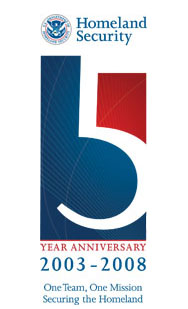
| Home | Information Sharing & Analysis | Prevention & Protection | Preparedness & Response | Research | Commerce & Trade | Travel Security & Procedures | Immigration |
| About the Department | Open for Business | Press Room |

The threat level in the airline sector is High or Orange. Read more.

An e-Passport has this international symbol on the cover.
An e-Passport contains an electronic chip. The chip holds the same information that is printed on the passport's data page: the holder's name, date of birth, and other biographic information. An e-Passport also contains a biometric identifier. The United States requires that the chip contain a digital photograph of the holder. All e-Passports issued by Visa Waiver Program (VWP) countries and the United States have security features to prevent the unauthorized reading or "skimming" of data stored on the e-Passport chip.
The United States requires that travelers entering the United States under the Visa Waiver Program have an e-Passport if their passport was issued on or after October 26, 2006. Additional information on VWP e-Passport requirements.
The inspection process for an e-Passport holder is the same as that for a non-e-Passport holder. When arriving at U.S. ports of entry, e-Passport holders will be directed by signage or personnel on the appropriate U.S. Customs and Border Protection booth to use.
E-Passports help to
The biographic and biometric data contained in the electronic chip can be compared to both the traveler and the travel document being presented. There are multiple layers of security in the e-Passport process that prevent duplication.
The United States and its VWP partners have worked together through extensive testing to identify a technology solution to support the production of e-Passports and e-Passport readers. Successful testing in the United States and overseas has been an important step forward in a larger, comprehensive effort to enhance security and facilitate legitimate travel and trade through international cooperation.
This page was last reviewed/modified on May 22, 2008.